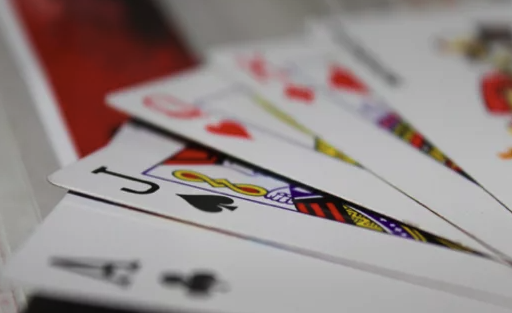Glossary Term
Semi-Bluff
Semi-Bluff
Used In: Poker
Introduction
the semi-bluff occupies a critical space between outright deception and calculated value betting. It involves betting or raising with a hand that is not currently strong enough to win at showdown but has the potential to improve significantly with future community cards. This concept hinges on two complementary sources of expected value: the possibility of immediate fold equity and the likelihood of completing a drawing hand.
What differentiates a semi-bluff from a pure bluff is the presence of drawing equity—the mathematical chance that a currently weak hand could become the best hand by the river. For example, a player holding a flush draw on the flop may choose to bet aggressively, not only in hopes of inducing folds but also knowing that approximately 35% of the time (depending on the number of outs and streets remaining), the draw may complete. This dual-path logic—forcing folds now or improving to a winning hand later—makes the semi-bluff a statistically grounded and flexible tactic.
From an analytical perspective, successful semi-bluffing requires a nuanced understanding of opponent tendencies, stack sizes, pot odds, and position. It's most effective when used in scenarios where the likelihood of opponent folds is non-trivial, and the drawing hand has a strong equity profile. Misapplied, a semi-bluff can leak chips and reduce long-term profitability, but when executed under the right conditions, it strengthens a player’s range, adds aggression to their strategy, and increases the pressure on opponents to make difficult decisions.
In Depth Look
The semi-bluff is a nuanced tactic in poker that blends aggression with probability. It occurs when a player bets or raises with a hand that is currently behind but has solid drawing potential—such as a straight or flush draw. Unlike a pure bluff, which relies entirely on fold equity, a semi-bluff builds its value from both fold equity and the statistical chance of improving to the best hand on later streets. This makes it a tool not just of deception, but of calculated pressure. Players semi-bluff to take control of the pot, narrow the field, and potentially win without needing to show down a completed hand.
A successful semi-bluff relies on several key conditions: the likelihood that opponents will fold, the strength of the draw, and the context of the hand—such as position, stack depth, and board texture. Betting out of position with a weak draw on a coordinated board may be ill-advised, but semi-bluffing in position with a strong draw and fold equity can make the move highly profitable over time. The strength of the semi-bluff lies in its ability to leverage uncertainty—forcing opponents into tough decisions while keeping real equity in play.
Key considerations for effective semi-bluffing:
- Fold Equity: Your opponent must be capable of folding—tight players and dry boards improve this chance.
- Drawing Equity: You should have a decent number of outs to improve to a strong hand if called.
- Positional Advantage: Semi-bluffs are more effective when made in position, allowing for better control of the hand and future streets.
Mechanics
Timing, hand selection, and understanding the dynamics of the table. It typically occurs on the flop or turn, when a player holds a drawing hand—such as four cards to a flush or an open-ended straight draw—that isn't strong enough to win yet but has real potential to improve. By betting or raising, the player applies pressure to opponents who may have marginal made hands, hoping to induce folds. If called, the player still retains a mathematically viable path to victory by hitting their draw on the turn or river. The key is that the bet has two paths to profitability: immediate fold equity and future hand equity.
To execute a semi-bluff effectively, the player must assess several variables in real time. Board texture plays a crucial role—wet, coordinated boards are more believable spots to represent strong hands, making a semi-bluff more credible. Opponent tendencies matter as well; semi-bluffing into loose calling stations is less effective than against tight, cautious players. Bet sizing is another mechanical element: it should be large enough to apply fold pressure but balanced to preserve value if the draw completes. Mastery of these elements allows players to disguise their intentions, maintain aggression, and keep opponents uncertain about the true strength of their range.


Illustrated Example
You're in a $1/$2 No-Limit Hold'em cash game and are dealt A♦5♦A♦5♦ in the cutoff. Everyone folds to you, and you raise to $6. The big blind calls. The flop comes K♣9♦2♦K♣9♦2♦, giving you a nut flush draw. The big blind checks. While you don't have a made hand yet, this is a strong draw with nine outs to the flush, plus the chance that an Ace could give you the best hand. You bet $10—not just to build the pot if you hit, but to potentially force out hands like 9x or weak Kings that aren’t confident in their kicker. If your opponent folds, you win the pot uncontested. If they call, you still have around a 35% chance to make your flush by the river.
This is a classic semi-bluff: you're not betting just to bluff but because you have real equity. On the turn, if you don't hit your flush but the opponent checks again, you might continue your aggression depending on how strong their range appears. If you hit your diamond on the turn or river, you can either slow down to induce action or keep betting to extract value. The move is effective because it balances risk with potential payoff—you're leveraging both psychological pressure and mathematical probability.
| Street | Board | Your Hand | Action | Equity / Purpose |
|---|---|---|---|---|
| Pre-Flop | — | A♦ 5♦ | Raise to $6 | Initiate aggression with suited Ace |
| Flop | K♣ 9♦ 2♦ | Flush draw | Bet $10 | Semi-bluff: 9 outs to flush, fold equity |
| Turn | K♣ 9♦ 2♦ 7♠ | Still a draw | Evaluate opponent, possibly bet again | Pressure + retained draw equity |
| River | K♣ 9♦ 2♦ 7♠ Q♦ | Nut flush | Value bet | Converted draw to winning hand |
Conclusion
Blending aggression with equity in a way that maximizes both pressure and potential. Unlike pure bluffs that rely solely on opponent folds, semi-bluffs offer a layered approach—giving players multiple ways to win a hand. By betting with drawing hands at the right time, players can control the pace of the game, disguise their intentions, and extract more value over the long run.
When executed with precision—taking into account position, opponent tendencies, and board texture—the semi-bluff becomes a powerful tool for maintaining an unpredictable and balanced range. It's not just about winning one hand, but about reinforcing a strategy built on calculated risk and disciplined aggression. Mastering the semi-bluff allows players to capitalize on both fold equity and drawing equity, making it an essential tactic in any well-rounded poker arsenal.
The Top Online Casinos for Playing Poker
These platforms prioritize player satisfaction by providing intuitive interfaces, seamless gameplay experiences, and robust security measures to ensure a fair and enjoyable environment for all users.


Author
Branimir Ivanov | Senior News Contributor







